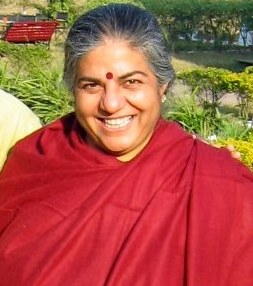Marie Curie – Physicist and Chemist, Queen of Modern Science
 Full name– Maria Skłodowska Curie
Full name– Maria Skłodowska Curie
Born on– 7th November, 1867 in Warsaw, Poland
Died on: 4th July 1934 (aged 66) at Passy, Haute-Savoie, France
Nationality– French
Education– Gained Licenciateships degree in Physics and Mathematical Sciences and doctoral degree of science at Sorbonne.
Well known for– Inspired by the work of Becquerel and Roentgen related to radioactivity, Marie Curie worked with Pierre Curie extensively on radioactive materials. In July 1898, Curie discovered a new element which she named after her native place as Polonium. Marie Curie, Pierre Curie and Henri Becquerel received Nobel Prize for Physics in 1903. She also successfully separated Radium from radioactive residues and studied its therapeutic properties to alleviate the sufferings of people during World War I. Marie Curie earned her second Nobel Prize for Chemistry in 1911 for her contribution. Marie Curie played a very crucial role in development of x-rays which was used extensively during World War I.
Education– Daughter of a secondary school teacher, she got her general education and training from local schools and her father. Marie always dreamt of going abroad to get an official degree, which she did in 1891 after roughly working for five years as a governess and tutor. With utmost dedication Marie received her master’s degree in Physics in 1893 followed by a degree in mathematics the next year. She worked on different types of steel and their magnetic properties for which she met Pierre Curie in 1894 whom she eventually married. She got her doctoral degree in science in 1903 and took over as the Professor of General Physics in the Faculty of Sciences after the tragic death of her husband in 1906. She was also appointed as the director in the Curie Laboratory in the Radium Institute, University of Paris in 1914.
Achievements– Marie Curie is very well known for her significant contribution in the field of radioactivity. She was the first women to have received a Nobel Prize and the first and only person to have received two Nobel Prizes. The other awards bestowed to acknowledge her contributions include Davy Medal (in 1903), Matteucci Medal (in 1904), Actonian Prize (in 1907), Elliott Cresson Medal (in 1909), Franklin Medal of the American Philosophical Society (in 1921). The unit for radioactivity has been entombed in honour of the Curie couple. The importance of her researches is reflected in the fact that she was the receiver of many honorary degrees and memberships across the whole world in medicine, science and law. She was also presented with one gram of radium on behalf of the women of America by President Harding. She also headed the radiological services of the International Red Cross Society and trained the doctors in the new technology. She died on 4th July, 1934 due to aplastic anemia on account of prolonged exposure to radioactive radiation, even on her death she was honoured and become the first and only women to be laid along with her husband in the Panthéon, Paris amongst the greatest minds in France.
References-
http://www.biography.com/people/marie-curie-9263538#final-days-and-legacy
http://www.nobelprize.org/nobel_prizes/physics/laureates/1903/marie-curie-bio.html
http://www.bbc.co.uk/history/historic_figures/curie_marie.shtml
Editor’s note: There are many women scientists who are responsible for making discoveries and advances in the fields of environment and natural science. On the occasion of World Women’s Day, we at Green Clean Guide decided to share information on world’s renowned women scientists. This is a series of articles to pay tribute to these exceptional women. Please visit category – ‘World Women Scientist’ regularly for updated information. Green Clean Guide wishes its readers a very happy World Women’s Day.



